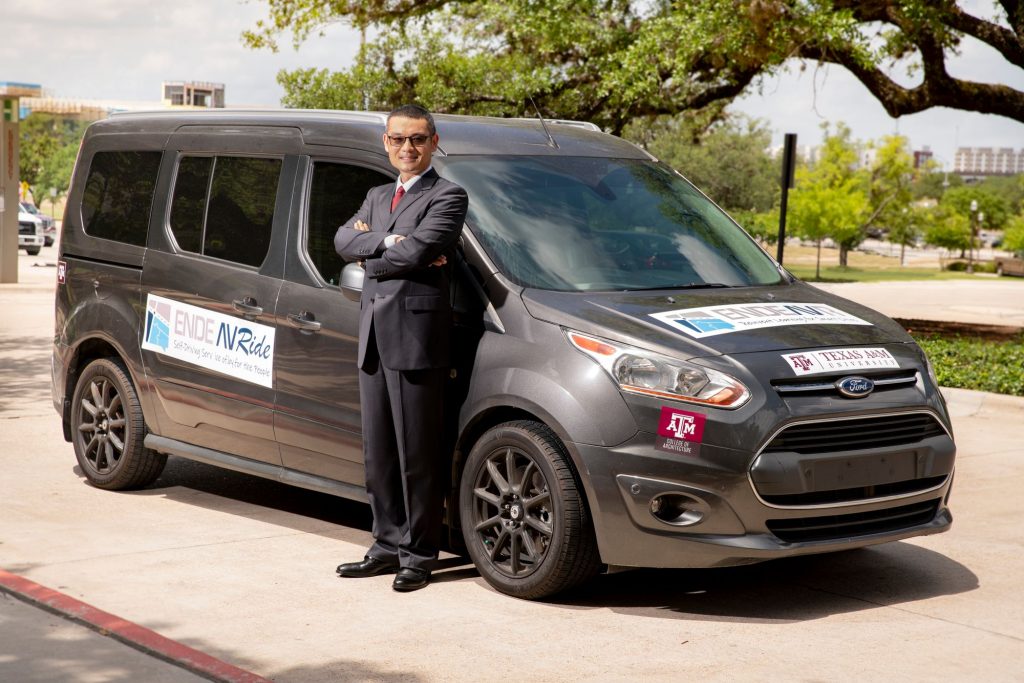Can smaller towns adopt technology that makes bigger cities ‘smart’?

“Smart” cities. They’re places that promise big improvements in important areas: better traffic flow, improved public safety, better optimized utility systems, and many other public benefits from an extensive, high-bandwidth digital network.
But this vision invariably refers to large cities with resources to invest in expensive software and infrastructure. Could “smart” technology also improve life in smaller towns?
It’s a question that Wei Li, Texas A&M associate professor of urban planning, is answering with ENDEAVR — an ambitious project he’s leading in which more than 120 students from a wide range of university degree programs collaborated with residents in Nolanville, a small Central Texas town 10 miles east of Killeen, to help it take its first “smart” city steps.
Nolanville’s forward-thinking residents have embraced the partnership.
“Working toward being a ‘smart’ city gives us an identity we didn’t have before,” said Kara Escajeda, Nolanville’s city manager. “It means everything in the way of providing a cohesive vision and plan for our community to work toward.”
Li launched ENDEAVR in 2018 with a $300,000 grant from the Keck Foundation, which supports projects that promote inventive educational approaches. At the project’s outset, students majoring in urban planning, landscape architecture, visualization, computer science, and civil, electrical and mechanical engineering gathered in seminars that covered the history of city development and learned how to shape proposals that spring from groups in different disciplines.
These seminars also prepared them for an intensive envisioning process with Nolanville residents, who provided ENDEAVR students with specific ideas about improvements and concerns they had about their community.
At the end of the spring 2020 semester, undeterred by the coronavirus pandemic, students presented “smart” city ideas for Nolanville via online presentations to community residents based on the envisioning process.
Escajeda, the city manager, was especially intrigued by students’ concepts of a train notification system. Train tracks run right through the middle of town, regularly causing delays and frustration for Nolanville motorists. “A couple of teams came up with notification system ideas, including an app-based alert system,” said Escajeda.
Another group proposed a district that would incentivize the establishment of high-tech startups or established companies. “One team proposed a district that included a smart city museum, a possible high- tech replacement for a traditional library, which is a very clever idea,” she said.
Another aspect of the ENDEAVR project will become a reality this fall: a van that, for the most part, drives itself and will ferry residents lacking easy access to vehicle travel — senior citizens, disabled citizens, and others without transportation — to appointments and other trips. A volunteer operator in the driver’s seat will guide the van through parking lots; other than that, the van, using a publicly available guidance system, will be on its own.
“The vehicle will also be equipped with mobile telemedicine facilities so that patients without internet access at home will be able to see a doctor virtually and safely inside,” said Li. “Residents and leaders in Nolanville are eagerly expecting this part of the ENDEAVR project stage.”
Self-driving, or autonomous, vehicles have been in various stages of development and testing for several years. Such vehicles promise to make transportation more readily available to the more than 75 million people in the United States who lack everyday transportation options.
“There are 25.5 million Americans with travel-limiting disabilities, 29.8 million people age 75 and up for whom driving might be a considerable safety risk, and 20.6 million Americans who live in households without cars,” said Li.
A significant hurdle to providing transportation relief to people in these demographics are the high prices that are common for autonomous vehicles.
But there are lower-cost options available, including relatively affordable kits that enable a mechanic to convert a standard vehicle into a semiautonomous car in just a few hours — the kind of vehicle that is part of the ENDEAVR/Nolanville project.
After a fall 2020 test of the semiautonomous van, ENDEAVR- affiliated scholars from several disciplines will assess how it affected users’ mobility, what kind of trips they used it for, and overall, how it affected their lives.

